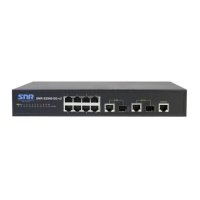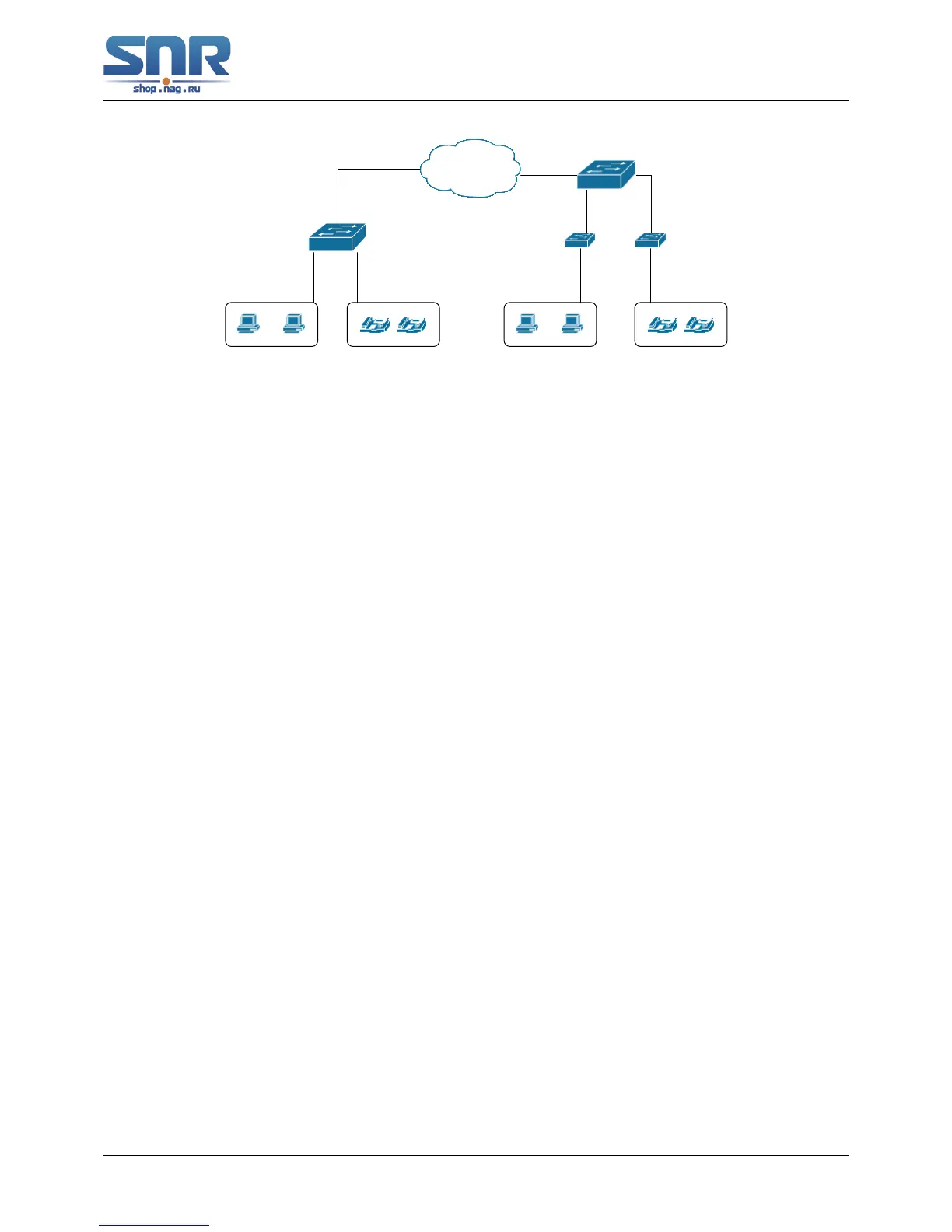Figure 18.1: Selective QinQ application
18.3 Typical Applications of Selective QinQ
1. Ethernet1/1 of SwitchA provides public network access for PC users and Ethernet 1/2 of
SwitchA provides public network access for IP phone users. PC users belong to VLAN 100
through VLAN 200, and IP phone users belong to VLAN 201 through VLAN 300. Ethernet
1/9 of SwitchA is connected to the public network.
2. Ethernet1/1 and Ethernet1/2 of SwitchB provide network access for PC users belonging to
VLAN 100 through VLAN 200 and IP phone users belonging to VLAN 201 through VLAN
300 respectively. Ethernet 1/9 is connected to the public network.
3. The public network permits packets of VLAN 1000 and VLAN 2000 to pass.
4. Enable the selective QinQ on Ethernet1/1 and Ethernet1/2 ports of Switch A and Switch B
respectively. Packets of VLAN 100 through VLAN 200 are tagged with the tag of VLAN 1000
as the outer VLAN tag on Ethernet1/1, and packets of VLAN 201 through VLAN 300 are
tagged with the tag of VLAN 2000 as the outer VLAN tag on Ethernet1/2.
Steps of configuration:
# Create VLAN 1000 and VLAN 2000 on SwitchA.
switch(config)#vlan 1000;2000
# Configure Ethernet1/1 as a hybrid port and configure it to remove
# VLAN tags when forwarding packets of VLAN 1000.
switch(config-if-ethernet1/1)#switchport hybrid allowed vlan 1000 untag
# Configure the mapping rules for selective QinQ on Ehernet1/1 to
# insert VLAN 1000 tag as the outer VLAN tag in packets with the tags
# of VLAN 100 through VLAN 200.
switch(config-if-ethernet1/1)#dot1q-tunnel selective s-vlan 1000 c-vlan 100-200
# Enable selective QinQ on Ethernet1/1.
135

